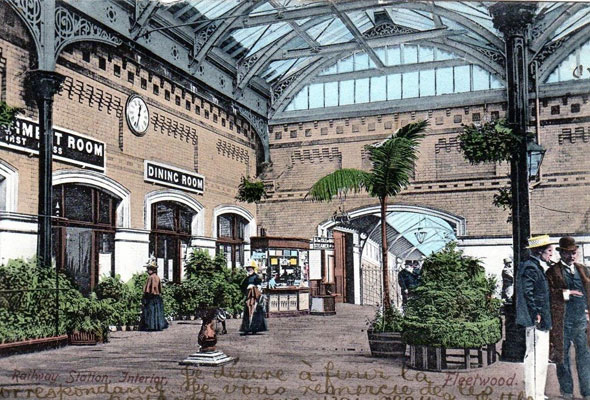
Fleetwood’s lost railway – the end of the line for the town’s beloved local rail link
In 1965 the railway dropped another bomb. Not just on the shop tenants this time, although it did seriously affect them, but it also concerned the whole town. Dr Beeching, a man previously never heard of, suddenly announced that in the interests of economy, many railway lines and stations were to be closed, the only ones left would be the main line stations in the big towns and to everyone’s annoyance Fleetwood did not come into this category. Petitions were raised and signed, and we wrote personally, pointing out that the line had historic claims as it was the first coastal railway link in the world, but either Dr Beeching was impervious to any historic claims or he didn’t even see the letter – and I suspect the latter as we received an acknowledgement, but no reply to our letter.
Many traders in the town either did not believe it was going to happen at all or that if the railway did close it would not really affect them any more than they had thought the loss of the I.O.M boats would affect them, until the boats did stop and then they began to realise what a loss to the whole town it was. People never learn do they?
But back to the Railway – the coal sidings, which had once been a busy area bustling with laden coal wagons and burly young men loading and unloading sacks of coal onto wagons for delivery all over the Fylde, had already closed and the area looked like a ghost town. Part of a staff waiting room and goods depot at the bottom of Adelaide Street had been used for some years by an engineering firm, working often into the late hours of the night and lighting up the nearby streets with a weird blue light accompanied by unearthly noises from the welding machines which must have frightened the life out of many an inebriate leaving the Victoria or Steamer hotels, now that too were empty and silent. And then came the lull before the storm, or so it seemed as we all waited, wondering what would happen next. Surely, they were not really going to tear down our beautiful railway station? That was inconceivable, but soon the station staff were being transferred, retired or laid off, and the buildings were empty and quiet, waiting mutely for their inevitable fate.
I wandered around the desolate area remembering things, people and places, seeing again the ghost of our friendly porter who wore clogs and could walk or run over the tiled floor of the station with grace and silence of a ballet dancer. I wandered through the cellars which had more recently been rented by Billy Greenwood from the ferry café and used as a rock factory for one of his ambitious enterprises. This particular scheme involved us and Harry Corbet of Sooty fame. Harry Corbet was appearing in Blackpool that summer and had just introduced into his act a glove puppet which he named Sooty, and which was an immediate hit with the children in the audience. As a publicity aid he thought up the idea of having bars of rock with Sooty’s name written through it to hand out to the audiences. Billy Greenwood was engaged to make the rock, which he did in the cellars of the Railway refreshment rooms, and we were asked to make enlarged photographs of sooty and the rock and to frame them.
The station officially closed in 1966 and soon the sad day came when the demolition crew arrived and started to pull it down, and not only the station came down, but also the two bridges at the bottom of Adelaide Street and Victoria Street were removed. I was particularly sorry to see them go, the stone bridge with the slope up which horses and carts had been taken for loading purposes and the iron bridge with the steps. On sunny days in summer we had walked over that bridge to sit on the quayside where, with many other local people, we had eaten our lunch-time sandwiches in the sunshine throwing crumbs to the wheeling seagulls and oyster catchers. I think a little bit of everyone’s life went with those bridges.
No one thought to tell the station’s painters that their contract was ended and we had the diverting sight one morning of watching demolition men waiting for a man to finish painting part of the station façade before they carefully removed the gleaming new paintwork to throw it on the bonfire they had lit for the purpose of disposing of the woodwork.
The last passenger train left in 1968. For a short time, Wyre Dock became Fleetwood’s station, but thousands of day trippers never came again and Fleetwood lost a lot more of its summer trade and revenue.
First published in Life in Fleetwood issue 12, September 1991.
You can leave a response, or trackback from your own site.













Got something to say..? Leave your thoughts...